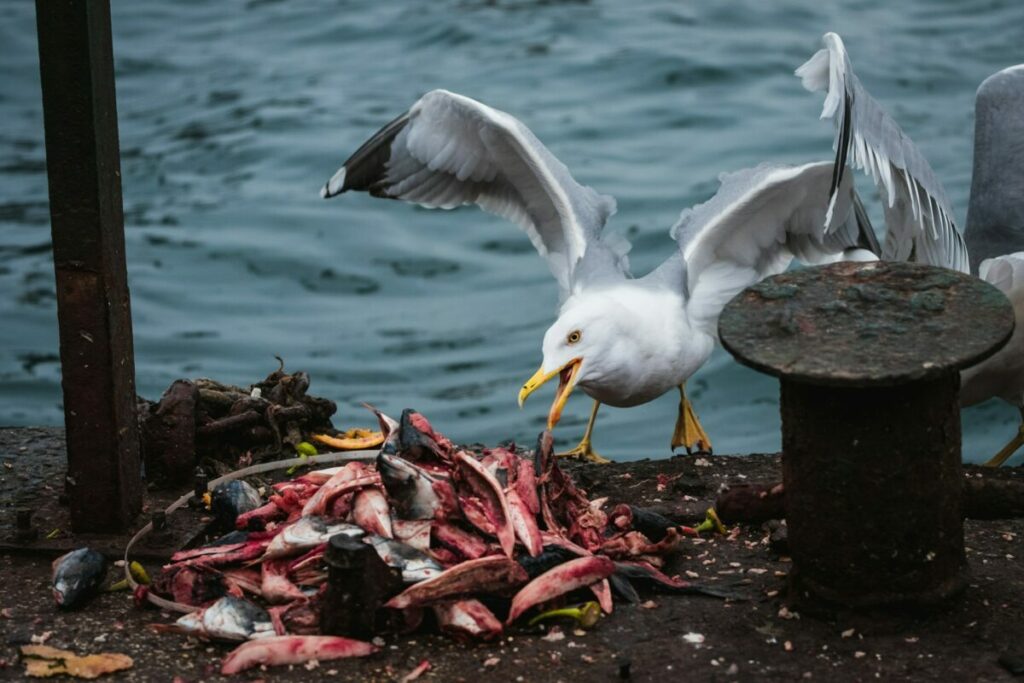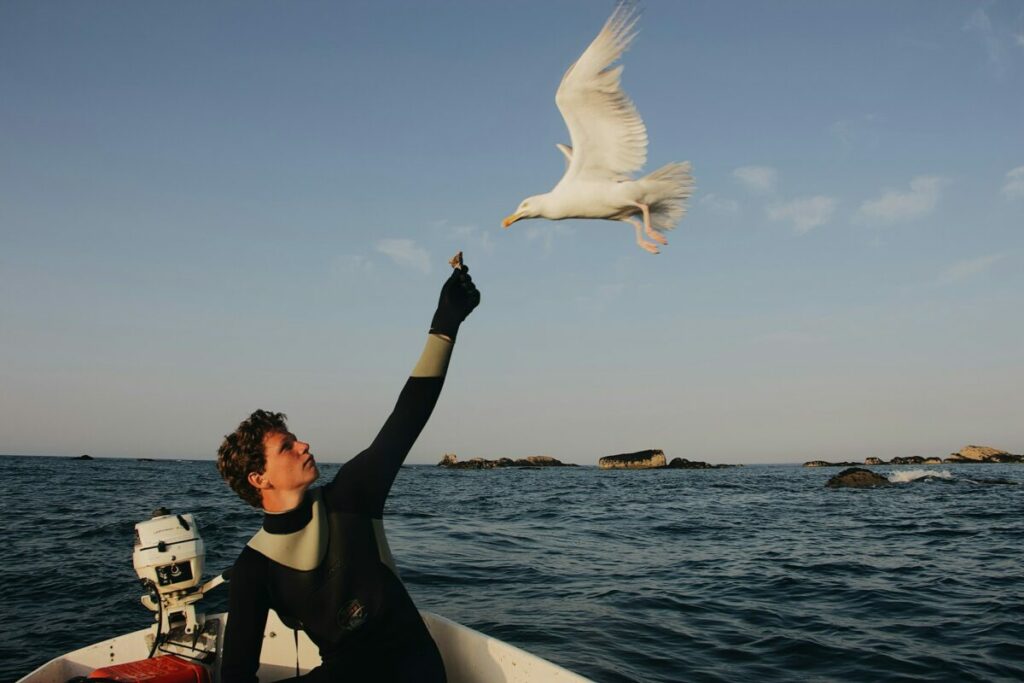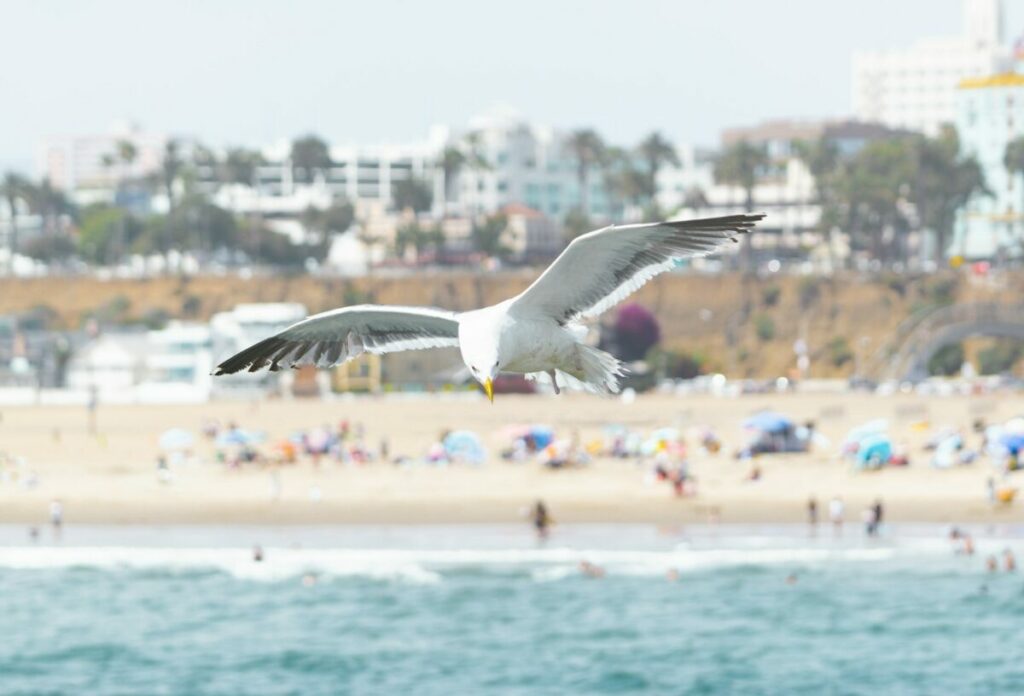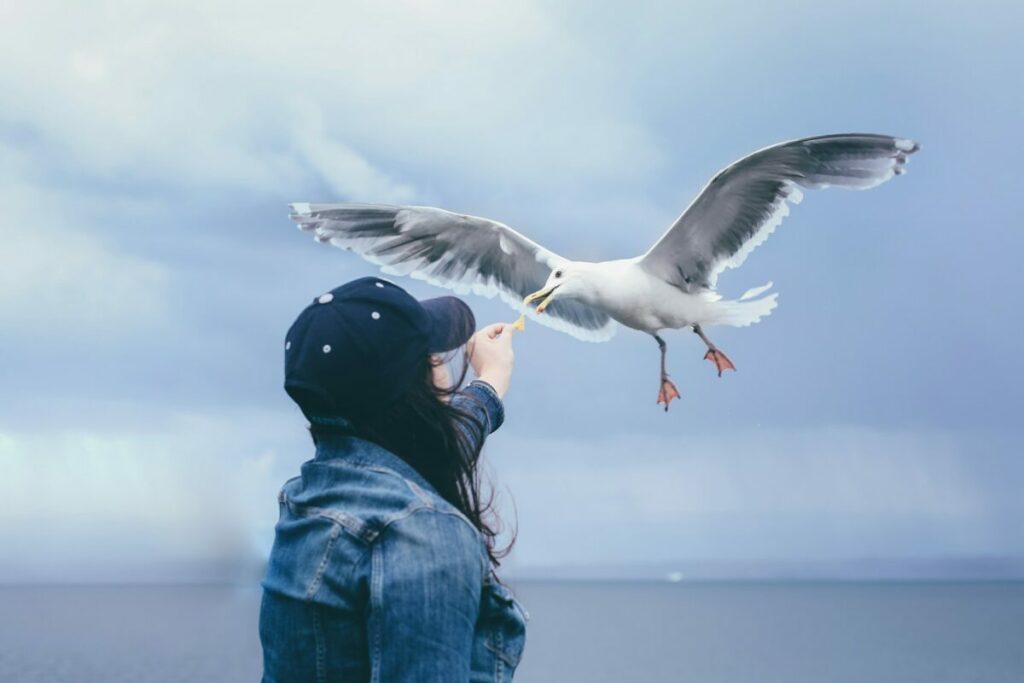Often found around large bodies of water, the ever mysterious seagulls are stunning creatures with white bodies and gray or black wings. Their nesting habits may surprise you; they prefer quiet islands or mountain sides to nurture their young. Since they fiercely guard their young until they are at least six months old, we rarely see baby seagulls near our human civilization. Despite their often frequent presence near populated areas, seagulls would rather stay clear of humans, explaining why having one as a pet might not be the best idea. Let’s further explore these fascinating creatures and answer the question, “what do seagulls eat?”
The Scavenger Life: What Do Seagulls Eat?

When you delve into the dietary habits of seagulls, you’ll quickly realize, they are quite the opportunistic eaters. Ever seen them scavenging around garbage dumps? That’s because these birds are scavengers and will eat pretty much anything they come across. Hence, they are seen at places abundant in discarded food which often happen to be human-occupied spaces like beaches. Their diet can significantly vary depending on where they are.
See Related: Keep Seagulls at Bay: Effective Methods for Seagull Deterrent
Around Humans

If they are around people, seagulls aren’t picky eaters. They’ll happily consume leftover fast food, bread, and other discarded food items. Essentially, what humans consider waste, seagulls see as a buffet.
Around Water Bodies

Around the ocean or deserted beaches, seagulls switch to a more natural diet scavenging for small aquatic creatures. Anything from a water rat to a shellfish is fair game for this opportunistic creature.
Feeding the Seagulls: Dos and Don’ts

While it might be charming to feed seagulls and have them come back to your property regularly, it’s essential to be mindful of how much food you’re offering. Overfeeding can attract large flocks that can potentially damage your property and bring unwelcome noise. The below tips can help ensure a balance:
- Keep feeding quantities small and controlled.
- Try a variety of foods but keep in mind, natural foods like small minnows appeal to them more.
- If supplementing with store food, consider affordable scrap seafood like small shrimp, clams, squid, and catfish.
In the end, the key to keeping these beautiful birds around your property is to offer just enough food without being overbearing.
Related Resources
For more insights into the bird-world, consider exploring these resources: